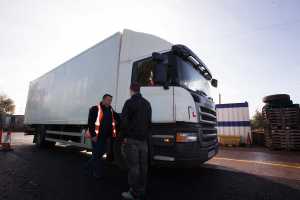Are HGV and LGV the same?
If you are looking to expand your driving capabilities, are looking for a job in transport and logistics, or are already in the industry, you will likely have heard of the terms HGV and LGV. These are commonly used terms and many people use them interchangeably. In which case, many people wonder why there are two names for the same thing? Is there actually a difference between HGV and LGV? In this article, we’ll be clarifying this topic and answering these questions.
What do HGV and LGV mean?
To understand why there are two names, you have to first understand the abbreviations. HGV stands for heavy goods vehicle whereas LGV stands for large goods vehicle. The two phrases largely describe the same vehicles – vehicles with a gross weight over 3,500kg which, in layman’s terms, are generally lorries. The difference in terms is not due to a physical difference between vehicles, but is actually to do with the taxation of such vehicles.
Which is the difference between HGV and LGV
Originally, in the UK, trucks were separated into two categories:
- Large goods vehicles: vehicles with a gross weight over 3,500kg
- Light goods vehicles: vehicles with a gross weight under 3,500kg
As both kinds of vehicle could be abbreviated to ‘LGV’, this clearly could be quite confusing. So, when the UK government updated road tax laws, grouping vehicles into different categories to form different tax brackets, large goods vehicles were renamed heavy goods vehicles (HGV). These brackets differ according to various vehicle features such as weight/size, engine size, fuel type and emissions, and dictate how much tax you have to pay. So, HGV is simply an alternative way to describe the same vehicles that LGV also refers to, and the name was brought about to primarily avoid confusion when dealing with taxes.
HGV/LGV licences
There are a few different licences that qualify you for driving different types of HGV/LGV. Covering vehicles from ambulances and removals vans to articulated lorries and car transporters, you should look into which kind of HGV/LGV licence you will need before deciding upon a certification course. The four main licences are:
- C1: lets you drive vehicles which weigh between 3,500kg and 7,500 kg, with a trailer up to 750kg
- C1 + E: lets you drive C1 vehicles but with trailers over 750kg, provided the gross combined weight doesn’t exceed 12,000kg
- C: lets you drive C1 vehicles and large vehicles weighing over 7,500kg up to 32,000kg, with a trailer up to 750kg
- C + E: lets you drive C1 and C vehicles, such as articulated, drawbar, and all rigid vehicles up to 44,000kg with trailers over 750kg
If you’re looking to gain a HGV/LGV licence, Euro 1 Training can offer top quality, comprehensive courses. We readily provide training for HGV/LGV C and C+E licences. Our expert course leaders have both industry and teaching experience, ensuring that you receive thorough training which is informed by real life vehicle operation. Don’t hesitate to contact our helpful team with any enquiries related to our plant machinery courses – we serve customers throughout Sheffield, Goole and Wakefield.

